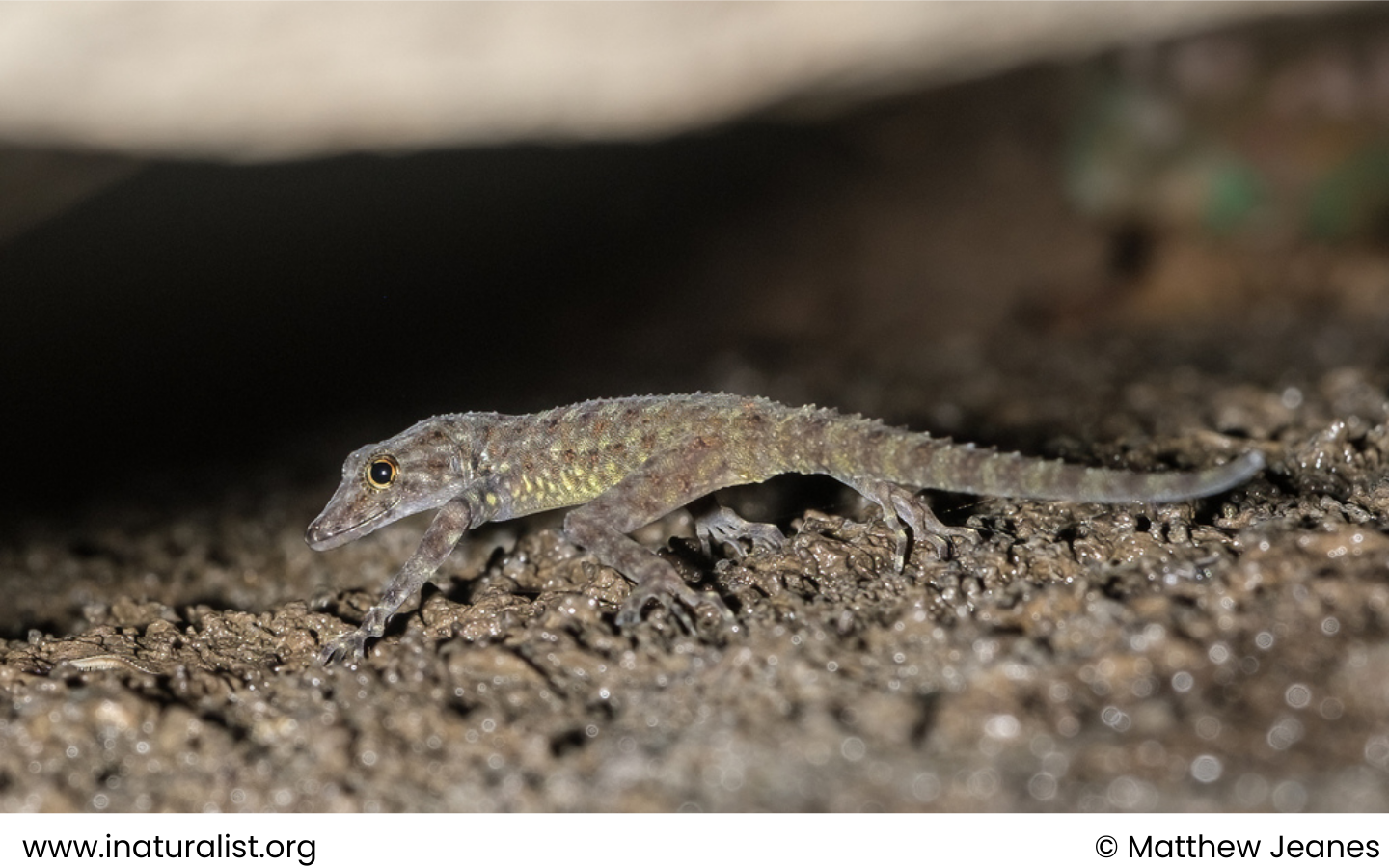
Science name: Cnemaspis nuicamensis – Grismer & Ngo, 2007
Taxonomic: Animalia>> Chordata>> Reptilia>> Squamata >> Gekkonidae >> nuicamensis
Species status: Endemic ; IUCN status: VU (Vunerable)
Description:
Physical characteristics: Adults have a maximum snout-vent length (SVL) of 47.5 mm. The species has 8 or 9 supralabials, 6 or 7 infralabials, smooth ventral scales, and 4–6 precloacal pores. The scales on the anterior forearm are weakly keeled, while the scales under the tail are smooth with a slightly enlarged median row. There are no femoral pores, and caudal tubercles are restricted to a single paravertebral row on either side of the midline.
Coloration: The dorsal side is a pale yellow with large reddish-brown spots and smaller black spots along the spine. The head has a reddish-brown net-like pattern surrounding off-white markings, and there are distinct dark brown bands on the tail. The ventral side is gray without markings.
Distribution and habitat:
Elevation: Found at elevations ranging from 10 to 250 meters.
Area: Endemic to Nui Cam Hill, Tinh Bien District, An Giang Province, Vietnam, near the border with Cambodia. The species is restricted to the Bay Nui Mountains and is likely endemic to the small area surrounding Nui Cam Hill.
Habitat: Cnemaspis nuicamensis inhabits granite boulders and rock cracks in old-growth, secondary, semi-deciduous forests, as well as highly disturbed forests. It is most commonly observed on vertical rock surfaces near streams.
Behaviour and ecology:
Lifestyle: Cnemaspis nuicamensis is diurnal and primarily active during the day, foraging on granite rocks and in rock crevices.
Reproduction: Oviparous, laying two eggs in rock crevices or tree hollows during the early rainy season.
Diet: The species feeds on insects found within its distribution range.
Conservation and status:
IUCN Red List Category and Criteria: Vulnerable (D2)
Threats: The species faces potential threats from development and habitat alteration due to increasing tourism in the area. Although some development has already occurred, the species is currently not considered critically endangered. Monitoring is needed to assess future threats and their potential impact on the species’ population.
Crocodile Trail – The Best Birding Trail in Cat Tien National Park
If you’re a birder or nature photographer planning a trip to Vietnam, few places offer [...]
Cong Troi Trail – Top 1 Dalat Plateau Birding Trail Experience
If you’re a birder or nature photographer planning a trip to Vietnam’s Central Highlands, the [...]
How to Identify the Greater Sand Plover, Tibetan Sand Plover and Siberian Sand Plover
Identification Differences within the Sand Plover Complex: The sand plover group, which was traditionally divided [...]
Highlights of Cat Tien National Park Reptiles and Amphibian Endemics
Spanning over 71,350 hectares of tropical forests, grasslands, and wetlands, Cat Tien National Park is [...]
Highlights of Cat Tien National Park Mammals in a World Biosphere Reserve
In addition to reptiles and birds, Cat Tien National Park is also rich in mammals, [...]
Kontum Plateau Endemic and Highlight bird
Kontum Plateau Endemic And Highlight Bird species like Chestnut-eared Laughingthrush and top birding routes while [...]